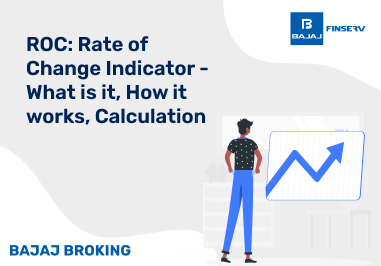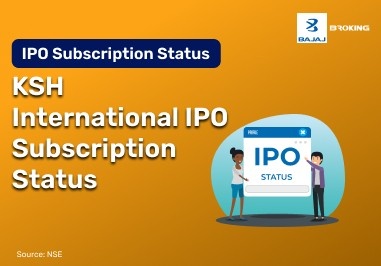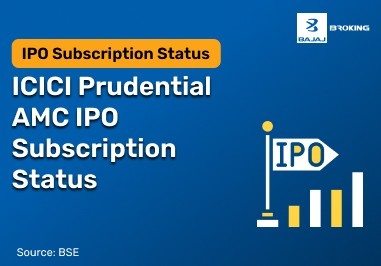EPFO - Employee Provident Fund Organization
The Employee Provident Fund Organization (EPFO) is a statutory body under the Ministry of Labour and Employment, responsible for regulating and managing EPF contributions. Established to oversee the implementation of the EPF Act, 1952, EPFO ensures that employees receive timely benefits upon retirement or resignation. It also manages schemes related to insurance and pension, making it one of India’s largest social security organizations.
The EPFO portal provides digital access to members, allowing them to check their balance, transfer EPF accounts, and apply for withdrawals. EPFO also plays a key role in pension management through the NPS scheme, complementing traditional investment avenues like investing in bonds, mutual funds, and the lumpsum calculator for retirement planning. Employers with more than 20 employees must mandatorily register under EPFO to facilitate employee benefits and ensure compliance with regulations.
Objectives of EPFO
- Encourage Retirement Savings – Ensure financial security for employees after retirement.
- Regulate Provident Fund Contributions – Monitor employer and employee contributions to EPF accounts.
- Provide Pension Benefits – Offer pension schemes under the Employee Pension Scheme (EPS).
- Offer Insurance Coverage – Manage Employees’ Deposit Linked Insurance (EDLI) for employees.
- Facilitate Easy Transfers – Enable seamless EPF transfers when employees change jobs.
- Ensure Digital Access – Provide online services through the EPFO portal.
- Promote Financial Inclusion – Encourage employees to invest in mutual funds, bonds, and NPS for retirement.
- Grievance Redressal – Handle employee grievances related to EPF contributions, withdrawals, and transfers.
Schemes Offered Under EPFO
- Employees’ Provident Fund (EPF) – A retirement savings scheme with employer and employee contributions.
- Employee Pension Scheme (EPS) – Provides a pension to employees post-retirement based on service tenure.
- Employees’ Deposit Linked Insurance (EDLI) – Offers life insurance coverage to EPF members.
- EPF Advance Withdrawal Scheme – Allows partial withdrawals for emergencies like medical expenses and education.
- EPF Interest Scheme – Ensures periodic interest accumulation on employee contributions.
- Online Claim Settlement – Facilitates quick processing of withdrawals and transfers via the EPFO portal.
- Unified Account Number (UAN) Services – Helps employees link multiple EPF accounts under one UAN.
- Employer Compliance Assistance – Provides guidelines for employers to manage contributions and compliance.
UAN and EPFO Portal
The Universal Account Number (UAN) is a unique identifier assigned to every EPF member, allowing them to manage their EPF accounts across multiple employers seamlessly. It eliminates the need for multiple EPF account numbers, making it easier to track contributions, withdraw funds, and transfer balances. The EPFO portal provides access to various services, including checking EPF balances, downloading passbooks, updating KYC details, and submitting withdrawal claims online.
Through the EPFO portal, employees can also calculate retirement savings using the lumpsum calculator, compare EPF with investment options like investing in bonds or the NPS scheme, and plan their financial future. Employers also use the portal to deposit contributions, verify employee details, and ensure compliance with EPF regulations. The digital transformation of EPFO has significantly improved the accessibility and efficiency of provident fund management.
EPF Eligibility
- Applicable to Salaried Employees – Any individual earning a salary is eligible for EPF contributions.
- Mandatory for Companies with 20+ Employees – Organizations with more than 20 employees must register under EPFO.
- Employee Contribution Requirement – Employees earning up to Rs.15,000 per month must contribute, while those earning above can opt in.
- Employer Matching Contribution – Employers contribute an equal amount toward the EPF account.
- Pension Eligibility – Employees who contribute to EPS for at least 10 years become eligible for a pension.
- EPF for Self-Employed – Self-employed individuals can voluntarily contribute under certain schemes.
- Partial Withdrawals – Employees can withdraw funds under specific conditions such as medical emergencies or home loans.
- Portability Through UAN – EPF accounts remain active even after job changes through UAN.
How is Interest on EPF Calculated?
The interest on Employees' Provident Fund (EPF) is calculated monthly but credited annually to the employee’s EPF account. It is computed on the closing balance at the end of each month, including contributions from both the employee and employer. The interest rate is set by the Employees' Provident Fund Organization (EPFO) and compounded annually. The accumulated interest enhances long-term savings, making EPF a reliable retirement investment. Understanding EPF interest calculation helps employees plan their financial goals, alongside other investments such as the National Pension System (NPS), investing in bonds, and mutual funds for a secure financial future.
- Monthly Interest Calculation – Interest is calculated on the closing balance at the end of each month.
- Annual Credit of Interest – The total interest earned is credited once a year.
- Compounded Basis – EPF interest is compounded annually to enhance returns.
- Government-Set Interest Rate – The interest rate is decided annually by the EPFO.
- Tax-Free Returns – Interest earned on EPF is tax-free under specific conditions.
- Impact of Early Withdrawals – Withdrawals before five years may result in lower returns.
- Continuous Contributions Boost Growth – Longer tenure leads to higher accumulation through compound interest.
- Comparison with Other Investments – EPF provides stable returns compared to investing in bonds and mutual funds.
Additional Read – EPF Interest Not Credited Yet
EPF Calculation
EPF is calculated based on an employee’s basic salary and dearness allowance. Employees contribute 12% of their salary, while employers contribute 12%, out of which 8.33% goes to the Employee Pension Scheme (EPS) and the rest to EPF. For example, if an employee earns Rs.25,000 per month, their contribution is Rs.3,000, and the employer’s EPF contribution is Rs.1,750, with Rs.1,250 allocated to EPS.
The accumulated amount earns interest, compounding annually, making EPF a reliable long-term savings option. Employees can use the lumpsum calculator to estimate their EPF corpus and compare it with other retirement plans like the NPS scheme and mutual funds.
EPF Forms and Their Purpose
Form Name
| Purpose
|
Form 19
| Final settlement of EPF balance upon retirement or resignation
|
Form 10C
| Withdrawal of EPS corpus
|
Form 31
| Partial withdrawal for medical, education, or home loan
|
Form 13
| Transfer of EPF account from one employer to another
|
Form 5
| Declaration of new employees eligible for EPF
|
Form 10D
| Monthly pension withdrawal after retirement
|
Form 20
| Claim for EPF in case of a member’s death
|
Form 2
| Nomination form for EPF account
|
How to Transfer EPF Money
- Login to the EPFO Portal – Visit the official website and log in with UAN.
- Verify Details – Ensure previous and current employer details are updated.
- Select Transfer Request – Choose the transfer option and fill in the necessary details.
- Approval by Employer – Submit the request for employer verification.
- EPFO Processing – EPFO processes the transfer request within a few weeks.
- Check Status – Track the transfer status on the portal.
- Confirm Fund Credit – Verify that the transferred amount reflects in the EPF passbook.
- Download Transfer Acknowledgment – Keep a copy of the transfer approval for records.
EPF Benefits
EPF provides financial security, tax benefits, and long-term wealth accumulation. It ensures stable retirement savings and acts as an emergency fund. Additionally, it complements investment options like investing in bonds, mutual funds, and the NPS scheme[1] [2] .
EPF Withdrawal Process
The Employees’ Provident Fund (EPF) withdrawal process is straightforward and can be completed online through the EPFO portal. Employees can withdraw their EPF balance fully or partially based on eligibility criteria. The process requires verification, employer approval, and final processing by EPFO. Below are the stepwise instructions to withdraw EPF funds efficiently.
- Step 1: Login to the EPFO Portal – Visit the Unified Member Portal and log in using your UAN, password, and captcha code.
- Step 2: Verify KYC Details – Ensure your Aadhaar, bank account, and PAN details are correctly updated to avoid delays.
- Step 3: Navigate to Online Claims – Click on the "Online Services" tab and select "Claim (Form-31, 19 & 10C)" for withdrawal.
- Step 4: Enter Withdrawal Details – Choose the type of withdrawal (full/partial), provide the reason, and fill in the required details.
- Step 5: Submit the Claim Request – After verifying all details, submit the withdrawal application for processing.
- Step 6: Authenticate with OTP – An OTP will be sent to the registered mobile number linked to Aadhaar for verification.
- Step 7: Employer Approval – The employer will review and approve the claim before it is forwarded to EPFO for processing.
- Step 8: EPFO Processing and Fund Transfer – After approval, EPFO will process the request, and the amount will be credited to the registered bank account within 7 to 10 working days.
EPF Taxation
EPF taxation depends on the duration of contribution and withdrawal conditions. If an employee withdraws EPF after five years of continuous service, the withdrawal amount, including interest, is exempt from tax. However, withdrawals made before completing five years are subject to tax deductions. The taxable amount includes the employer's contribution and the interest earned on it, which is added to the employee’s taxable income.
If the withdrawal exceeds Rs.50,000, TDS at 10 percent is deducted if the PAN is provided. If PAN is not submitted, the TDS rate increases to 30 percent. Employees can claim a refund while filing their income tax returns if their total income falls below the taxable limit. EPF contributions qualify for tax benefits under Section 80C, with a limit of Rs.1.5 lakh per year. Interest earned on annual contributions exceeding Rs.2.5 lakh is taxable. Employees should consider other tax-efficient retirement planning options such as the National Pension System, investing in bonds, and mutual funds for better financial planning.
EPFO Information for Grievances
EPFO provides multiple channels for employees to register complaints related to provident fund withdrawals, incorrect balance updates, UAN issues, or employer non-compliance. The EPFO Grievance Portal is the primary platform where employees can submit complaints online.
Employees can also reach out to EPFO through their regional office, email, or helpline number 14470 for direct assistance. Complaints can be submitted through the UMANG mobile app, which integrates EPFO services for convenient tracking. Once a complaint is filed, employees can check the status on the EPFO grievance portal, and resolutions are typically provided within 15 to 30 working days. In cases where grievances remain unresolved, they can be escalated to senior EPFO officials or the Central Provident Fund Commissioner. Keeping EPF records updated and regularly checking statements helps prevent discrepancies and ensures smooth access to funds when needed.
Conclusion
EPF is a crucial savings scheme that provides employees with long-term financial security. With features like tax-free interest, portability through UAN, and online accessibility, it remains one of the most reliable retirement savings options. Alongside EPF, individuals can explore other investment opportunities such as investing in bonds, mutual funds, and the National Pension System (NPS) for diversified financial planning.














